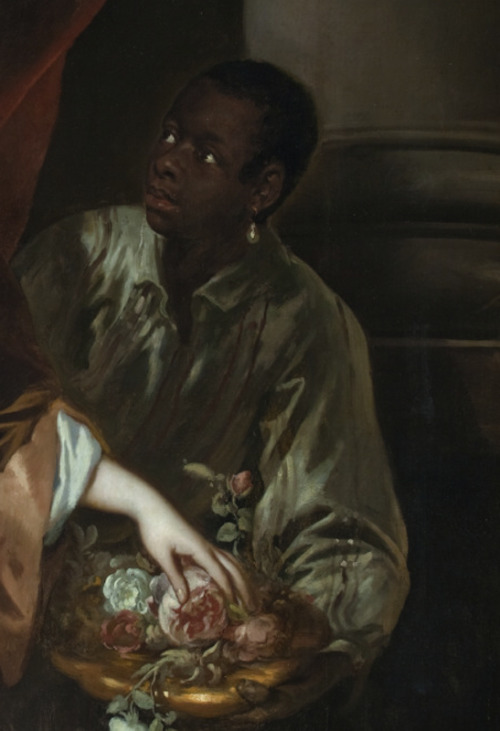medievalpoc: heartsalchemy: medievalpoc: Peter Lely Portrait of Elizabeth Murray England (c. 1650) O
medievalpoc: heartsalchemy: medievalpoc: Peter Lely Portrait of Elizabeth Murray England (c. 1650) Oil on canvas, 124 x 119 cm [x] [x] [x] [x] I think I have seen pictures of this before, in high school maybe, but I don’t remember there being a second person before. I seem to remember this image being cropped differently too, which is very disturbing because now that I see the entire painting, the way I remember it being cropped was very clearly and deliberately intended to remove the person holding the tray of flowers. Since we’re throwing haymakers at the kyriarchy today, I think this is something that we should really be talking about too, because it happens ALL. THE. TIME. Level 1: People of Color from Medieval, Renaissance, and other Early Modern European works were often literally painted over in later decades or centuries. For example: In this painting, Giulia de’Medici (the child) was painted over in the 19th century: Level 2: It was very fashionable in a lot of 17th and 18th century paintings to have a Black servant featured in portraits of very important historical figures from European History. Honestly? They’re practically ubiquitous. A lot of the very famous paintings you’ve seen of European and American historical figures have a Black servant in them that have been cropped out or painted over. Those silly stock photos from your American History Professor’s Powerpoint? Your Professor’s PowerPoint for “George Washington”: The actual painting: Your professor’s Powerpoint on Jean Chardin: The actual painting: PowerPoint on Maria Henriette Stuart (with some commentary about the Habsburg jaw): Actual Painting: But, because of whitewashed history curricula, teachers and professors continue to use the cropped images because they don’t want their lecture to get “derailed” by a discussion about race. These images are also more commonly seen on stock photo sites, including ones for academic use. I honestly can’t find anyone really writing about this, or even any analysis on how often the cropped photos are used. The reason they are so easy to crop out is because of the the artistic conventions which reflect the power hierarchy: Oil paintings of aristocratic families from this period make the point clearly. Artists routinely positioned black people on the edges or at the rear of their canvasses, from where they gaze wonderingly at their masters and mistresses. In order to reveal a ‘hierarchy of power relationships’, they were often placed next to dogs and other domestic animals, with whom they shared, according to the art critic and novelist David Dabydeen, ‘more or less the same status’. Their humanity effaced, they exist in these pictures as solitary mutes, aesthetic foils to their owners’ economic fortunes. This is drastically oversimplified, but at least it addresses it directly. If anyone knows more on any studies or statistical evidence on this tendency, feel free to add it. -- source link
Tumblr Blog : medievalpoc.tumblr.com
#history

